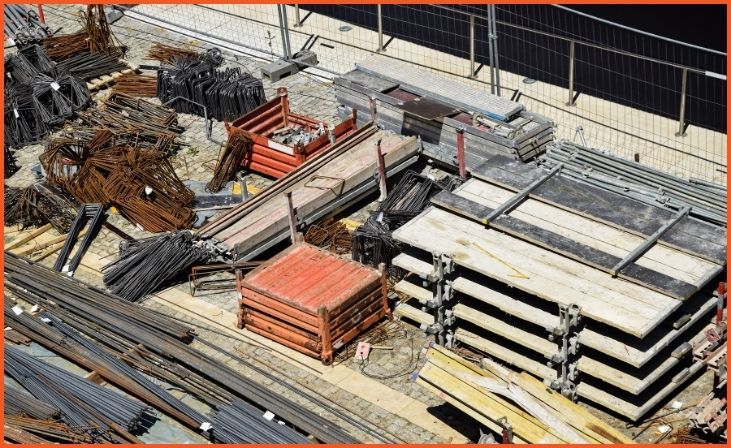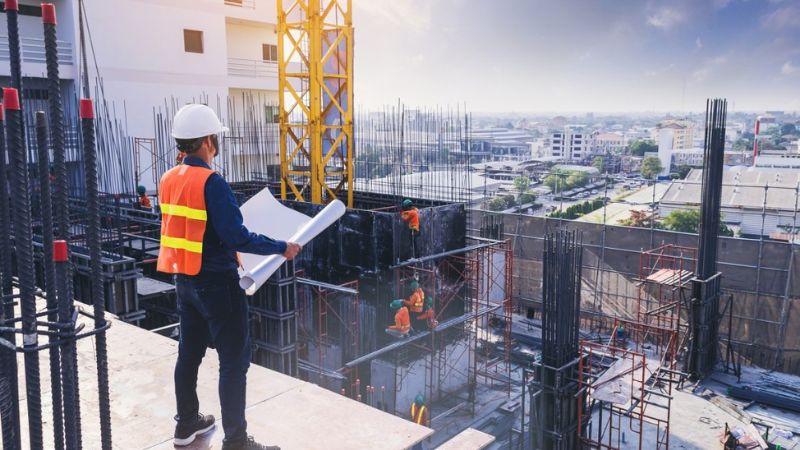The construction industry is continuously evolving, and staying ahead of the curve is crucial for success. In 2024, several emerging trends are set to reshape how we build, design, and manage construction projects. From advanced technologies to sustainable practices, these trends offer innovative solutions to long-standing challenges. Embracing these changes can lead to increased efficiency, reduced costs, and improved safety on construction sites. This blog delves into the top 9 construction industry trends for 2024, providing insights into the future of construction and how industry professionals can adapt to these developments to maintain a competitive edge.
The Top 9 Construction Industry Trends For 2024
1. Adoption of Artificial Intelligence and Robotics

Artificial Intelligence (AI) and robotics are revolutionizing the construction industry by automating various tasks, reducing human error, and increasing overall efficiency. AI algorithms can analyze large datasets to predict project outcomes, optimize scheduling, and improve resource allocation. Robotics, on the other hand, are being used for repetitive and hazardous tasks such as bricklaying, welding, and demolition. These technologies not only enhance productivity but also improve worker safety by minimizing exposure to dangerous conditions.
AI-driven tools are now capable of creating detailed 3D models and simulations, allowing for better project planning and risk management. Predictive maintenance, powered by AI, helps in identifying potential equipment failures before they occur, reducing downtime and repair costs. As construction companies invest in AI and robotics, they can expect significant improvements in project timelines and cost efficiencies.
2. Growth of Modular and Prefabricated Construction
Modular and prefabricated construction methods are gaining traction due to their ability to reduce construction time, lower costs, and minimize waste. These methods involve assembling building components in a controlled factory environment before transporting them to the construction site for final assembly. This approach not only speeds up the construction process but also ensures higher quality control and reduces the impact of weather-related delays.
In 2024, we expect to see an increase in the adoption of modular construction for residential, commercial, and even infrastructure projects. Advances in design and manufacturing technologies have made it possible to create highly customizable and aesthetically pleasing modular structures. Additionally, prefabricated components can be reused or recycled, aligning with the industry’s push towards sustainability.
3. Increased Focus on Sustainability and Green Building
Sustainability continues to be a major focus in the construction industry, with a growing emphasis on green building practices. In 2024, we will see more construction projects incorporating sustainable materials, energy-efficient systems, and waste reduction strategies. The use of renewable energy sources, such as solar and wind power, in construction sites is becoming more prevalent, reducing the carbon footprint of construction activities.
Green building certifications, such as LEED (Leadership in Energy and Environmental Design) and BREEAM (Building Research Establishment Environmental Assessment Method), are gaining importance as clients demand eco-friendly and energy-efficient buildings. These certifications not only enhance the marketability of properties but also contribute to long-term cost savings through reduced energy consumption and maintenance expenses.
Read Also: Sustainable Building Materials For Modern Construction
4. Advancements in Building Information Modeling (BIM)
Building Information Modeling (BIM) is transforming the construction industry by providing a digital representation of the physical and functional characteristics of a building. BIM allows for better collaboration and communication among stakeholders, reducing errors and rework. In 2024, we expect BIM to become even more sophisticated, integrating with other technologies such as AI, IoT, and cloud computing.
Enhanced BIM tools will facilitate real-time data sharing and project management, improving decision-making and project outcomes. The ability to create detailed 3D models and simulations will enable architects, engineers, and contractors to visualize the entire project lifecycle, from design to demolition. As BIM continues to evolve, it will play a critical role in enhancing efficiency and reducing costs in construction projects.
5. Rise of Smart Construction Materials

By offering improved functionality, energy efficiency, and durability, smart building materials are transforming the construction sector. Among them are materials that can mend cracks independently, like self-healing concrete, and materials that change phases to control temperature by absorbing and releasing heat. 2024 will witness a rise in the application of these cutting-edge materials in building projects.
The integration of smart materials with IoT technology allows for real-time monitoring and maintenance of building structures. Sensors embedded in these materials can detect stress, temperature changes, and other factors, providing valuable data for predictive maintenance and extending the lifespan of buildings. As the demand for sustainable and resilient infrastructure grows, smart construction materials will become an integral part of the industry.
6. Emphasis on Safety and Health
Safety and health have always been top priorities in the construction industry, and this focus is intensifying with the advent of new technologies and regulations. In 2024, we will see a greater emphasis on wearable technology, such as smart helmets and vests, which can monitor workers’ health and safety in real-time. These wearables can detect fatigue, exposure to hazardous conditions, and even provide alerts in case of accidents.
Drones are also playing a significant role in enhancing safety by conducting site inspections and monitoring hazardous areas without putting workers at risk. Virtual Reality (VR) and Augmented Reality (AR) are being used for safety training, allowing workers to simulate dangerous scenarios and learn how to respond effectively. As safety standards continue to evolve, the construction industry will adopt more innovative solutions to protect its workforce.
7. Integration of Internet of Things (IoT) in Construction
The Internet of Things (IoT) is making construction sites smarter and more efficient by connecting machinery, tools, and workers through a network of sensors and devices. IoT technology enables real-time data collection and analysis, improving decision-making and project management. In 2024, we will see increased adoption of IoT solutions in construction, leading to enhanced productivity and safety.
By managing inventories, tracking supplies, and keeping an eye on equipment performance, IoT devices help ensure on-time delivery and minimize downtime. Aside from preventing accidents and enhancing general well-being, wearable IoT devices may offer insights on the health and safety of workers. Building environments will become more connected and productive when IoT is integrated with other technologies, including AI and BIM.
8. Digital Twin Technology
Digital Twin technology is transforming the construction industry by creating virtual replicas of physical structures. These digital models are continuously updated with real-time data from sensors and IoT devices, providing a comprehensive view of the building’s performance and condition. In 2024, we will see more construction projects utilizing Digital Twin technology to enhance planning, construction, and maintenance processes.
Digital Twins enable predictive maintenance, allowing for early detection of potential issues and reducing downtime and repair costs. They also facilitate better decision-making by providing accurate and up-to-date information about the building’s performance. As the construction industry embraces this technology, it will lead to improved efficiency, reduced costs, and enhanced sustainability.
9. Growing Use of Drones in Construction

Drones are becoming an essential tool in the construction industry, offering numerous benefits such as site surveying, progress monitoring, and safety inspections. In 2024, the use of drones will continue to grow, providing valuable data and insights that improve project management and decision-making. Drones can quickly and accurately capture aerial images and videos, creating detailed site maps and 3D models.
Drones are also being used for real-time monitoring of construction sites, allowing for better progress tracking and identifying potential issues before they become major problems. Their ability to access hard-to-reach areas and conduct inspections without putting workers at risk enhances safety and efficiency. As drone technology continues to advance, it will play an increasingly important role in the construction industry.
Read Also: Sustainable Building Materials For Modern Construction
Conclusion
The construction industry is poised for significant transformation in 2024, driven by advancements in technology and a growing emphasis on sustainability. By understanding and integrating these trends, construction professionals can enhance their operations, achieve greater efficiency, and contribute to a more sustainable future. To succeed in this fast-paced sector, one must be knowledgeable and flexible.
FAQs
What is the most impactful construction trend in 2024?
The most impactful trend is the integration of advanced technologies like AI and robotics, which streamline processes and improve efficiency.
How can construction companies benefit from sustainable practices?
Sustainable practices can lead to cost savings, improved environmental impact, and enhanced reputation, attracting more clients and projects.



